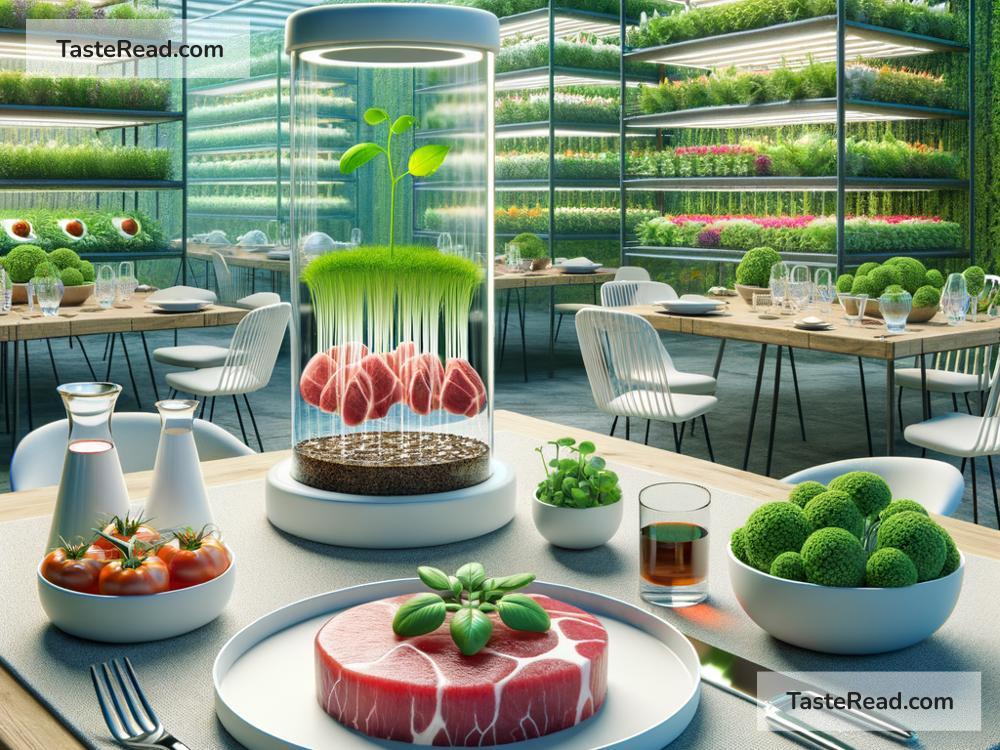The Future of Food and Systemic Sustainability: Building a Healthier Planet
Food is something we all think about every day. It’s what keeps us alive, gives us energy, and brings people together. But the way we grow, produce, and consume food is changing fast. More people are asking questions like: How can we feed a growing global population? How can we make sure food is affordable, safe, and nutritious? And how can we do all of this without harming the planet? These questions are forcing us to think about the future of food and how to make it sustainable for generations to come.
What Does “Sustainability” Mean for Food?
When we talk about sustainability and food, we’re asking how food production can happen without damaging the environment, using up all of Earth’s resources, or harming people. Right now, we face big challenges. Farming uses a lot of land, water, and energy. Food waste is a huge problem, with millions of tons of food thrown away each year. And climate change is making it harder to grow crops because of droughts, floods, and severe weather. On top of that, people in some parts of the world still don’t have enough to eat.
Systemic sustainability means looking at the bigger picture—how all the parts of food production and consumption fit together. It’s not just about farmers or grocery stores; it includes governments, industries, consumers, and nature itself. Everyone plays a role in creating a food system that works better for people and the planet.
The Future of Food: What Could It Look Like?
The good news is that people around the world are already working on creative solutions for the future of food. Here are some exciting ideas and trends that could shape the way we eat in the years to come:
1. Advanced Farming Technology
Farming is becoming smarter thanks to technology. For instance, precision farming uses tools like drones, sensors, and GPS to help farmers grow crops more efficiently. Instead of watering entire fields, these tools can target only the plants that need it, saving water. Vertical farming, where plants are grown indoors in stacked layers, is another breakthrough. These farms use less land and can grow food anywhere, even in cities. Technologies like these can help farmers grow more food while reducing environmental impact.
2. Lab-Grown and Alternative Proteins
Did you know people are already eating hamburgers made from meat grown in labs? Lab-grown meat is created by taking animal cells and growing them outside the animal’s body. This process uses fewer resources compared to traditional livestock farming and produces less pollution. Another option is plant-based meat alternatives, made from ingredients like soy, peas, and mushrooms. These products mimic the taste and texture of meat, making them popular among people who want to reduce their impact on the planet.
In addition, insects are becoming a surprising source of protein. In many cultures, eating insects is common, and scientists say crickets and mealworms are packed with nutrients. As food habits evolve, these alternative proteins may become a bigger part of our diets.
3. Reducing Food Waste
Food waste is a huge problem. Every year, nearly one-third of the food produced globally is wasted, either during production or because people throw it away. The future of food will focus on smarter ways to stop waste. Apps and programs are being created to help people buy only what they need and make sure grocery stores don’t throw away good food. Composting—turning food scraps into fertilizer—can recycle wasted food and enrich the soil. By reducing waste, we can make better use of the food we already produce.
4. Eating Local and Seasonal Food
To make food more sustainable, many people are turning to local and seasonal foods. Local food doesn’t have to travel far, so it uses less energy and creates less pollution. Seasonal food is grown naturally in its best season, rather than requiring artificial conditions, which saves resources. In the future, communities may focus more on supporting local farmers and markets, creating healthier environments both for people and the planet.
5. Circular Food Systems
Traditional food systems often follow a straight line: grow food, use it, and toss the leftovers. Circular food systems, on the other hand, aim to reuse resources as much as possible. For example, leftover food can be turned into animal feed or bioenergy. Packaging can be made from biodegradable materials instead of plastic. By rethinking how we use and reuse resources, circular systems can reduce waste and pollution.
What Can We Do to Help?
It can feel overwhelming to think about the future of food, but the truth is, everyone can make small changes that add up. Here are some simple ways to help:
- Try eating plant-based meals more often. Even one meat-free day a week can reduce your environmental footprint.
- Support local farmers and businesses by shopping at farmers’ markets or buying locally grown food.
- Reduce food waste at home by planning meals, using leftovers, and composting.
- Learn more about where your food comes from and how it’s made. Being informed helps you make better choices.
Building a Better Food Future Together
The future of food is exciting, but it’s also challenging. It’s not just about finding new ways to produce and eat food—it’s about making sure the whole system works for everyone, including the environment. Systemic sustainability means thinking carefully about how every step of food production and consumption connects. Scientists, farmers, governments, and everyday people will all need to work together to create lasting change.
As we look ahead, one thing is clear: the food choices we make today will shape the future of our planet and our health. So let’s work toward a world where food is delicious, accessible, and sustainable—for everyone.


